Trails and tours
Trails use Oxford University Gardens, Libraries and Museums’ (GLAM) permanent displays as a tool to communicate current research. Using objects on display to illustrate research concepts, trails present an accessible way for researchers to share their work with a wide public. Trails allow for independent exploration at visitors’ own pace.
There may be scope for cross-collections trails which span more than one GLAM institution. For example, the GLAM-wide Museum of Climate Hope trail aims to encourage positive engagement with environmental change among young people and was created by researchers from the University's Environmental Change Institute (ECI) in collaboration with GLAM. Trails require advance planning with up to two years’ notice.
Researchers can develop research-themed guided in-person walks as part of GLAM institutions’ public education programmes. Front-of-house, audio and online tours of permanent displays and special exhibitions can help visitors understand particular aspects of the collections in more depth. Behind-the-scenes tours can enhance visitors' understanding of the work of researchers and GLAM staff by allowing them access to non-public parts of GLAM’s buildings.
Audio tours can enhance the on-site experience and can be undertaken independently. Tailored touch tours for people who are Blind or Partially Sighted are offered across GLAM.
Please be aware that GLAM venues have full and busy programmes and it may not be possible to pick up activities that have already been fully developed or to deal with urgent requests. Ideally, activities should be co-created with GLAM from project conception and researchers should get in contact early so that we can work together to develop your ideas. Please note that while researchers may contact GLAM departments directly they are also encouraged to contact departmental/Divisional PCER facilitators for interim support/guidance.

GLAM PCER Toolkit | Getting started |
| Opportunities by category | Opportunities by institution | Case studies |
(Please note that opportunities are subject to change)
Trails
- Trails can be a relatively low-cost and accessible way for researchers to share their work with a wide public, although associated printing costs must be accounted for in order for (paper-based) trails to be sustainable
- Trails can be tailored toward specific audiences based on age, language, etc. It is not really possible to do a ‘one-size-fits all trail’ because the age of the target group dictates the level of information required
- The trail design can be adapted so that it includes data capture and audience feedback, and can be updated as required
- Trails only allow for one-way communication and can a relatively static means of presenting research, although digital apps/interactives allow for more dynamic engagement (see the Online engagement section of the GLAM PCER Toolkit for further details)
Tours
- Tours can be made accessible to a broad range of audiences provided the tour guide can be flexible and adapt their engagement style to the audience that is present on the day
- Tours can provide excellent opportunities for two-way dialogue with researchers as they can respond to audience queries and tailor the tour as it progresses
- Tours may be time and resource-intensive, and may be unsuitable for certain groups, particularly if there are any issues around mobility
- Due to practical limitations (group size, volume, etc.), the potential numbers of participants for in-person tours may be low compared to activities that engage the larger general public audiences of the GLAM institutions. Online tours allow for much wider engagement and, if recorded, are not restricted to particular times
- Tours can be led by public engagement staff, researchers or volunteers, but must be developed collaboratively and with consultation with front-of-house and events teams in order that they do not disrupt other GLAM activities
- Researchers may or may not want to be involved in delivery once the tour has been launched. To be sustainable in the long-term, public engagement staff or volunteers might then deliver the same tour multiple times, or online tours can be recorded for posterity
- Time and resource will be required for training staff and building awareness of new products and opportunities. Lead time for recruitment, training and induction for volunteers needs to be considered
Costs can be variable and may require additional project funding:
- Trail printing costs – can be significant for busy museums
- Staffing, e.g. public engagement, digital teams – may be in-kind costs. See section on How much will the PCER activity cost? in the GLAM PCER Toolkit for further details
- Design work beyond that already provided by GLAM institution
- Press release & additional marketing support (if required – may be covered via regular GLAM channels)
- Evaluation costs, e.g. Evaluation Officer time for analysis
- Digital production costs (for online tours/trails) – see the Online engagement section of the GLAM PCER Toolkit for further details
Please note that this is not an exhaustive list and that these type of activities may incur costs not listed here.
Please contact the relevant team to discuss costs as soon as possible.
Examples (in alphabetical order by GLAM institution)
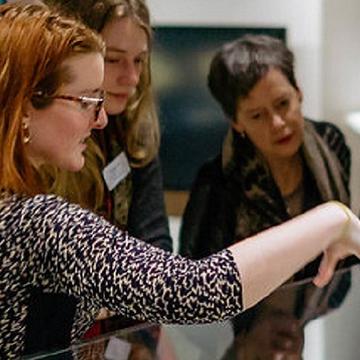
Ashmolean Museum
Researchers could potentially develop tours focused on exhibitions, displays and permanent collections.
Example: Members' evening gallery tour: 18th-century portraits & Japanese art
Further examples/information: Events webpage
Ashmolean PCER projects are currently being updated. Examples and opportunities are subject to change.
Contact: PER Coordinator, Zoe Bampton (zoe.bampton@ashmus.ox.ac.uk)
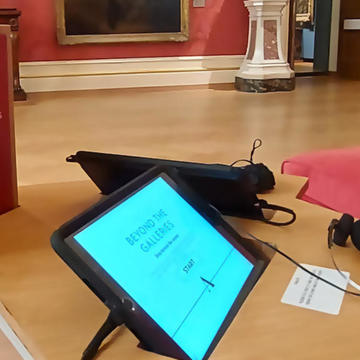
On-site interactive iPad/tablet experience
Ashmolean Museum
Researchers could potentially develop resources for the Museum’s interactive iPad/tablet experience (with headphones) using existing tablets/web apps and/or developing new ones. These enhance visitors’ exploration of particular galleries by taking a tour of objects, including artworks not on display, and hearing stories directly from Museum curators and researchers through images, text, audio and video.
Approx. costs: Costs may be around £4,000 including staff costs, equipment purchase, web development and licences
Example: Beyond the Galleries | Ashmolean Adventure
Ashmolean PCER projects are currently being updated. Examples and opportunities are subject to change.
Contact: PER Coordinator, Zoe Bampton (zoe.bampton@ashmus.ox.ac.uk)
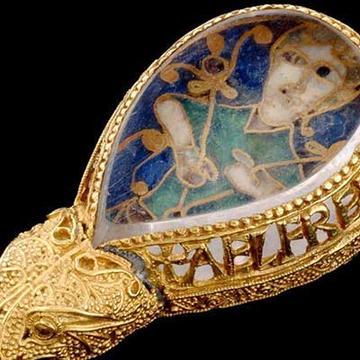
Ashmolean Museum
Audio tours integrate a broad range of voices and perspectives which makes listening more inclusive and interesting.
Researchers could potentially develop a themed audio tour for the SMARTIFY platform which uses Museum collections to tell new stories.
Further information: Smartify at the Ashmolean webpage
Ashmolean PCER projects are currently being updated. Examples and opportunities are subject to change.
Contact: PER Coordinator, Zoe Bampton (zoe.bampton@ashmus.ox.ac.uk)
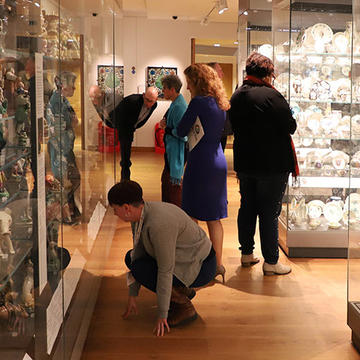
Ashmolean Museum
Researchers could develop a trail utilising the Museum's permanent displays as a tool to communicate current research through a focused, tailored gallery trail accessible to visitors in print and/or digitally.
Example: Ovid 2000 trail
Further examples/information: Trails webpage
Ashmolean PCER projects are currently being updated. Examples and opportunities are subject to change.
Contact: PER Coordinator, Zoe Bampton (zoe.bampton@ashmus.ox.ac.uk)
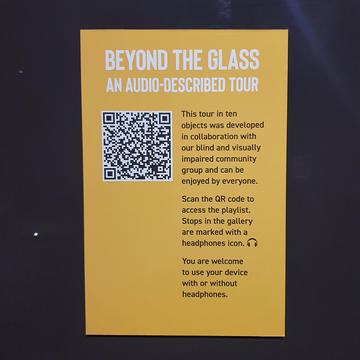
Bodleian Libraries
Audio tours accompanying exhibitions can be listened to whilst exploring the exhibitions in situ by scanning the QR codes in the gallery, or enjoyed at home.
Researchers could potentially develop audio tours to accompany an exhibition or display.
Approx. costs: Costs can be variable – contact team to discuss options
Example: Sensational Books Audio Tour
Further examples/information: Events and exhibitions webpage
Contact: Public Engagement team (publicengagement@bodleian.ox.ac.uk)

History of Science Museum
Trails can be downloaded or picked up in the Entrance Gallery for families to discover exciting stories and objects during their visit. Topics have included women in science, Einstein’s trail and amazing animals.
Researchers could potentially develop bespoke versions (dependent on funding).
Approx. costs: Tours/trails would require additional funds were available from project grants – discuss with relevant team
Example: Women in Science
Further examples/information: Families webpage
Contact: Learning team (learning@hsm.ox.ac.uk)

History of Science Museum
Bespoke collection-focused tours could be developed with researchers.
Approx. costs: Tours/trails would require additional funds were available from project grants) – discuss with relevant team
Contact: Learning team (learning@hsm.ox.ac.uk)
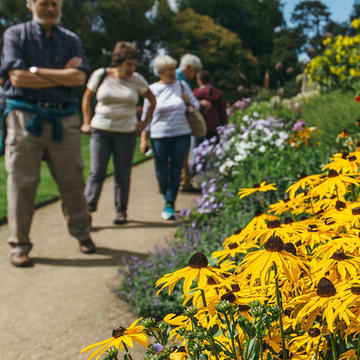
Oxford Botanic Garden and Arboretum
Researchers can develop audio tours at the Garden or Arboretum through exploitation of existing digital communication programmes in GLAM. Costs include development and deployment in collaboration with GLAM Digital Communications team. More audio tours can be downloaded via the University of Oxford’s podcast webpages.
Example: Botanic Garden Chemistry Audio Tour | Botanic Garden Audio trail
Contact: Deputy Director and Head of Science (chris.thorogood@obg.ox.ac.uk)

Oxford Botanic Garden and Arboretum
Researchers can develop research-themed guided in-person walks around the Garden or Arboretum as part of the public education programme.
Example: Fungi Foray on National Fungus Day
Further examples/information: Guided tours webpage
Contact: Events Team (events@obg.ox.ac.uk)
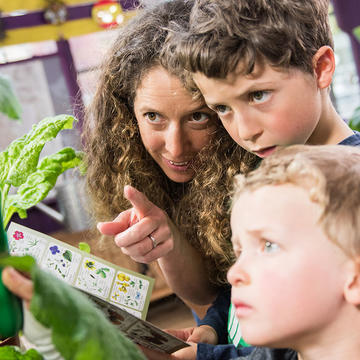
Oxford University Museum of Natural History
As well as family trails covering topics including dinosaurs, evolution and insects, researchers could also develop trails which are linked to research-based exhibitions.
Approx. costs: Limited costs - researchers should bring themselves and their research
Example: Meat the Future – Family Trail
Further examples/information: Family trails webpage
Contact: Education team (education@oum.ox.ac.uk)

Oxford University Museum of Natural History
Researchers could potentially work with the Education team to develop bespoke research-led tours linked to exhibitions and displays.
Approx. costs: Limited costs - researchers should bring themselves and their research
Example: Opening the Doors of Mr Hope's Entomology Collection
Further examples/information: Events webpage
Contact: Education team (education@oum.ox.ac.uk)
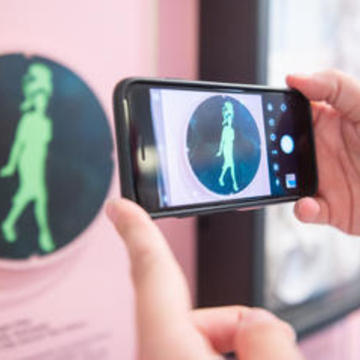
Audio described exhibition tours
Pitt Rivers Museum
Researchers could potentially develop audio described tours of exhibitions and/or displays.
Example: Beyond the Binary: Audio Described Exhibition Tours
Further examples/information: Events webpage
Contact the museum for more information (prm@prm.ox.ac.uk)

Pitt Rivers Museum
Researchers could potentially develop current research through a focused, tailored gallery trail accessible to all visitors in print and/or digitally. Free trails which can be downloaded or picked up when visitors arrive at Pitt Rivers Museum currently include Ancient Egyptians, Museum highlights, world foods, and a trail about diverse lived-experiences around gender and sexuality.
Approx. costs: Variable – get in touch to discuss
Example: Beyond the Binary: Gender, Sexuality, Power object trail
Contact the museum for more information (prm@prm.ox.ac.uk)




